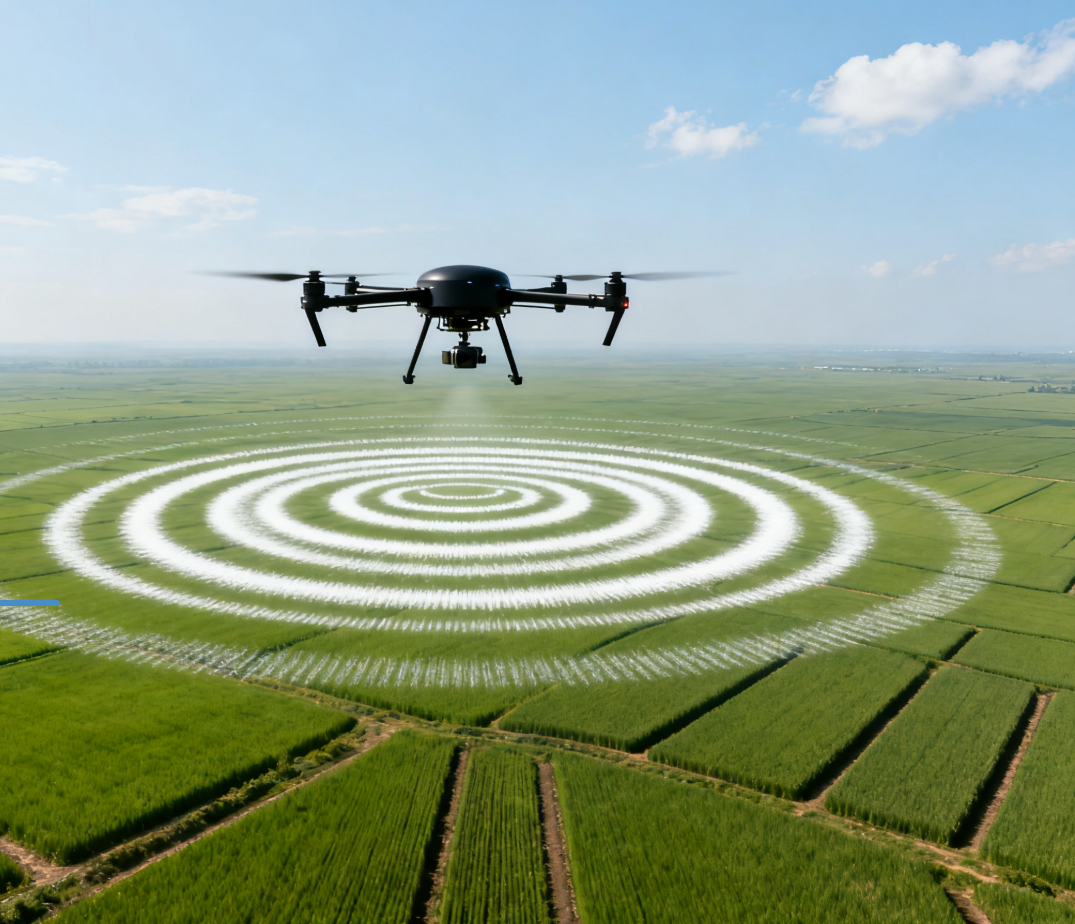Introduction
Millimeter-wave (mmWave) radar has become a cornerstone technology in automotive safety, industrial automation, UAV navigation, and security monitoring. One of the most common questions asked by engineers and system integrators is: “What is the range of mmWave radar?”
The range of a radar system directly impacts its suitability for various applications. Linpowave specializes in high-precision mmWave radar solutions that deliver reliable detection across different ranges and environmental conditions. In this article, we explore technical factors affecting mmWave radar range, performance expectations, and practical applications, providing actionable guidance for industry decision-makers.
1. Understanding mmWave Radar Range
The radar range refers to the maximum distance at which the radar can reliably detect and track a target. For mmWave radar, several factors influence this range:
-
Operating Frequency
-
Most automotive and industrial mmWave radars operate at 24 GHz, 60 GHz, or 77–81 GHz.
-
Higher frequency provides better spatial resolution but may slightly reduce effective detection range due to increased atmospheric attenuation.
-
-
Transmitted Power
-
Radar detection range increases with the transmitted power. Linpowave radars are optimized for efficient power management while maintaining long-range detection capability.
-
-
Antenna Gain and Beamwidth
-
Directional antennas with higher gain can detect targets at longer distances.
-
Narrower beamwidths improve angular resolution but may slightly reduce the effective detection area.
-
-
Target Characteristics
-
Larger or more reflective targets (e.g., vehicles) can be detected at greater distances.
-
Small or low-RCS (Radar Cross Section) targets, such as pedestrians or drones, require higher sensitivity to detect at the same range.
-
-
Environmental Conditions
-
Rain, fog, snow, and dust can attenuate mmWave signals. Linpowave radars employ advanced signal processing algorithms to maintain reliable detection in adverse weather conditions.
-
2. Typical Detection Ranges of mmWave Radar
| Application | Frequency | Typical Detection Range | Notes |
|---|---|---|---|
| Automotive Long-Range Radar (LRR) | 77–81 GHz | 150–250 m | Used for adaptive cruise control, highway driving assistance |
| Automotive Short-Range Radar (SRR) | 24–77 GHz | 20–80 m | Used for blind-spot detection, parking assist |
| Industrial Monitoring | 60–77 GHz | 50–200 m | Monitors machinery, conveyors, and robotics |
| UAV / Drone Navigation | 60–77 GHz | 30–150 m | Obstacle avoidance and precise positioning |
Note: The actual range may vary depending on target size, reflectivity, and environmental factors. Linpowave’s mmWave radar products are designed for stable performance across a range of scenarios, ensuring that long-range and short-range targets can be reliably detected.
3. Factors Affecting Range in Real-World Applications
-
Target Radar Cross Section (RCS)
-
The larger the RCS, the stronger the reflected signal. Vehicles, large drones, and metallic machinery have higher RCS than humans or small objects, making them detectable at longer distances.
-
-
Weather and Atmospheric Effects
-
Rain, fog, snow, and dust attenuate mmWave signals.
-
Linpowave radars integrate adaptive signal processing to compensate for environmental attenuation and maintain detection reliability.
-
-
Angle of Incidence
-
Detection is strongest when radar waves hit the target perpendicularly.
-
Targets at sharp angles may produce weaker reflections, slightly reducing effective range.
-
-
Multipath Interference
-
In indoor or urban environments, signal reflections from walls or buildings may affect range accuracy.
-
Advanced algorithms in Linpowave radars mitigate multipath interference, ensuring accurate distance measurement.
-
4. Range vs. Resolution Trade-Off
One important design consideration is the trade-off between detection range and spatial resolution:
-
Long-range detection usually requires narrower beams and higher gain antennas.
-
High-resolution detection for small targets may require higher frequencies and shorter pulses, which can slightly reduce maximum detection distance.
Linpowave radars are engineered to balance long-range capability with fine resolution, allowing detection of both large and small targets in diverse environments.
5. Applications Depending on Radar Range
Automotive Safety
-
Long-range radar (150–250 m): Enables adaptive cruise control, collision avoidance, and highway lane monitoring.
-
Short-range radar (20–80 m): Supports parking assistance, blind-spot monitoring, and pedestrian detection.
Industrial Automation
-
Medium-range radar (50–200 m): Tracks machinery, robotic arms, or conveyor systems in factories, reducing collision risk and increasing operational efficiency.
UAV / Drone Navigation
-
Short-to-medium range radar (30–150 m): Detects obstacles, measures altitude, and ensures precise navigation in indoor and outdoor environments.
6. FAQs About mmWave Radar Range
Q1: What is the maximum range Linpowave mmWave radar can detect?
-
Linpowave long-range mmWave radars can detect vehicles up to 250 meters, while short-range radars reliably detect objects from 20 to 80 meters depending on size and reflectivity.
Q2: Does weather affect the radar range?
-
Yes, rain, fog, and snow attenuate mmWave signals. Linpowave radars incorporate adaptive signal processing to maintain stable detection in adverse weather.
Q3: Can mmWave radar detect small targets like drones or pedestrians?
-
Yes, Linpowave mmWave radar provides high spatial resolution to detect small targets at medium range, balancing accuracy and coverage.
Q4: How do I choose the right radar range for my application?
-
Consider target type, environment, and required safety or automation function. For example, automotive highway applications require long-range radar, whereas parking or UAV navigation may rely on short-to-medium range radar.
7. Summary
The range of mmWave radar depends on frequency, transmitted power, antenna design, target characteristics, and environmental conditions. Linpowave mmWave radar solutions are optimized for both short-range and long-range detection, providing high precision, all-weather reliability, and dynamic target tracking.
For industry decision-makers and engineers, understanding radar range is critical for system design. Linpowave radar products enable safer vehicles, smarter industrial operations, and more reliable UAV navigation, bridging the gap between technical capabilities and practical applications.



